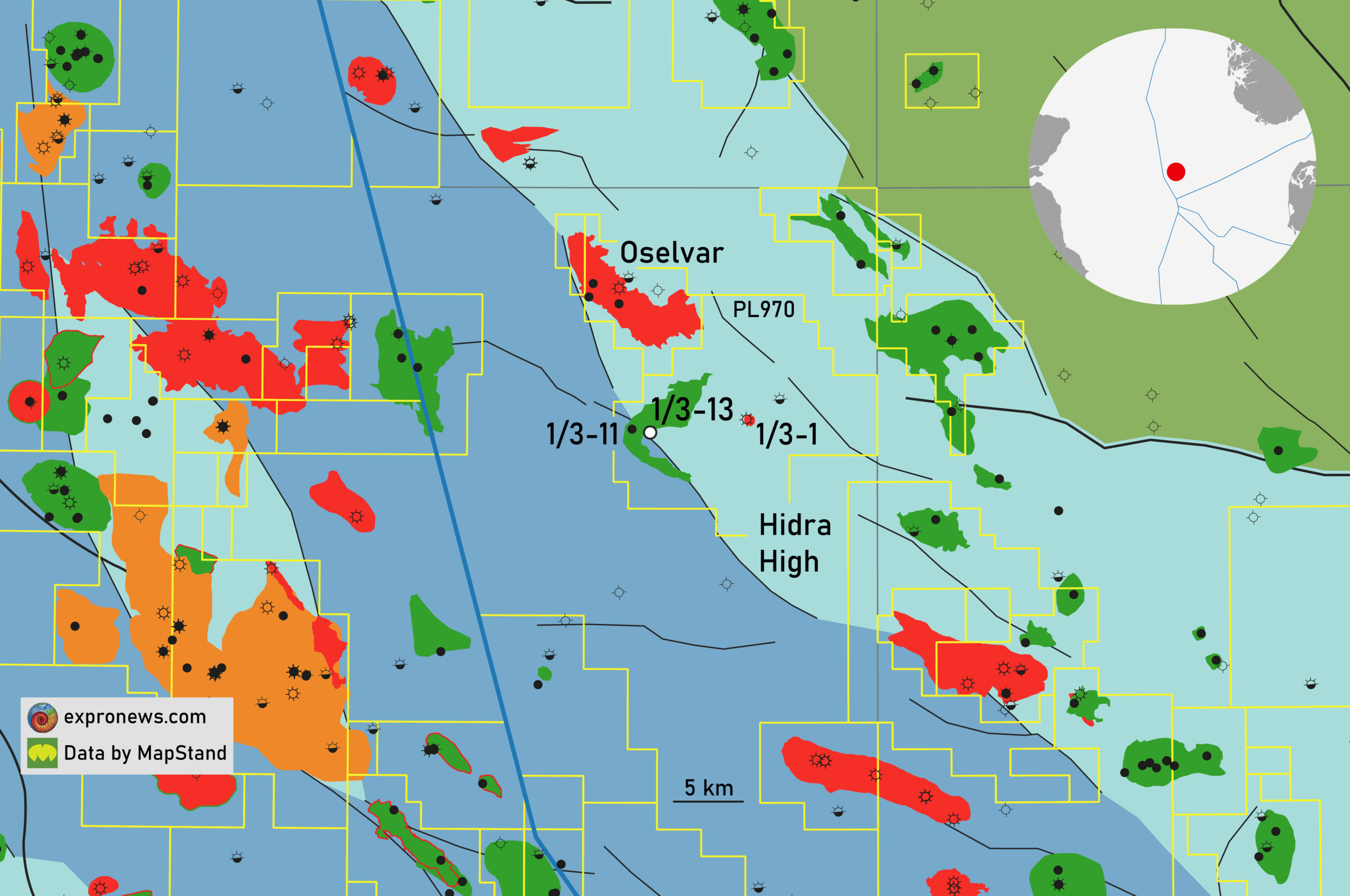Back in 2008, Dong E&P Norway drilled well 1/3-11 only 1,200 m to the west of where 1/3-13 has now been spudded. However, the target of the Dong-operated well was different, as the Danes were looking to prove oil in the Paleocene-Eocene sands of the Forties Sandstone Member.
Well 1/3-13 is operated by OMV and partnered by Petoro (20%) and Neptune (20%) and is located in PL970.
Both the 11 and 13 wells are situated around the so-called Ipswich salt dome, an Upper Permian Zechstein salt piercement of which many are being found in the Southern North Sea. Maybe it is even not too much of a surprise Dong drilled this particular prospect in 2008, as the Danish sector is also known for its prospectivity related to salt diapirs and salt walls. In addition, the company was also looking into the Paleocene Siri Canyon sands play at the time, so combining those two observations it is not too much of a surprise that the Ipswich prospect appeared on their radar.
The outcome of 1/3-11 well was a bit of a surprise though. In the parent well, the target Forties sandstone was not found, but oil shows were recorded in the underlying Paleocene Andrew sandstone. However, due to the unexpected nature of the Andrew Sandstone find, no coring had taken place. It was therefore decided to sidetrack the well more downdip of the salt dome to both core the Andrew sandstone and try to find the Forties sandstone. In this case, the sidetrack found both the Forties as well as the Andrew sandstones, but the latter was water bearing whilst the former turned out to be oil-filled.

Although a 60 m oil column was proven in the 1/3-11 sidetrack, the recoverable volumes must have been on the low side given the lack of activity since. With OMV now drilling – most likely – into the top of the Upper Cretaceous cover of the salt dome, targeting the Tor Formation of the Ommadawn prospect, it could add a volume to the already existing Paleocene accumulation. Given the relatively tight nature of the Chalk in most areas, it is likely that the company is hoping to drill a fracture network within the Tor Fm that would ensure fluid flow.
An additional upside of the currently drilling well is the opportunity to prove that the Andrew sandstone does not shale out over the crest of the salt diapir similar to what the Forties sandstone seems to do. If that is the case, the Andrew sandstone may in fact be a good secondary target candidate.
HENK KOMBRINK




